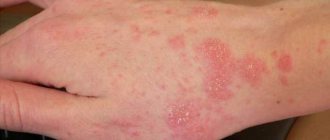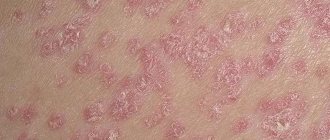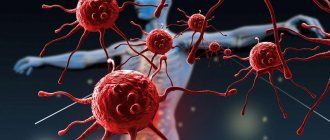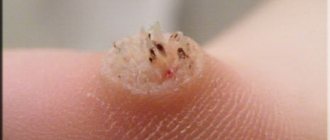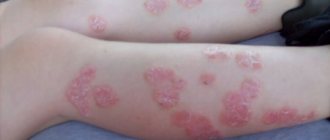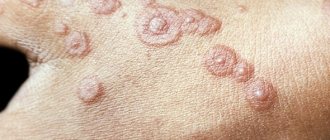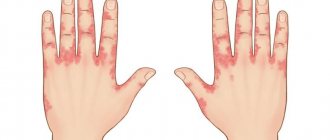Lupus erythematosus is one of the dangerous and incurable diseases that develops against the background of immune disorders. Many people classify this disease as a dermatological one, since its first symptoms are manifested by changes in the skin, but it has now been proven that lupus erythematosus is a systemic disease in which damage occurs not only to the skin, but also to internal organs and systems. A few decades ago, people suffering from lupus erythematosus died 3 to 5 years after its development. At the moment, thanks to modern medicine and pharmacology, patients with this disease can live much longer and even live to an advanced age. The main thing is to consult a doctor in time, to choose the right treatment regimen that can stop the symptoms of the disease and slow down its development. Systemic lupus erythematosus is not very common among the population, but women suffer from it many times more often than men.
What is lupus erythematosus?
Systemic lupus erythematosus (SLE) is a severe autoimmune systemic disease of connective tissues, in which the skin is damaged, the functioning of internal organs and systems is disrupted, which causes severe symptoms with a sharp deterioration in well-being. During the development of the disease, an abnormal reaction of the immune system to its own cells occurs, which leads to the production of immunoglobulins (antibodies) that attack its own tissues, provoking inflammation and various pathological changes in the functioning of the whole organism. The disease can manifest itself in several forms, develop slowly or rapidly, but in any case, with proper treatment, it can be kept under control.
With lupus erythematosus, human immune cells attack the body, thereby provoking various inflammatory processes, including damage to joints, muscles, skin, heart, kidneys, lungs and other organs. It is difficult to answer in which organ exactly the first pathological changes will begin, therefore, if this disease is suspected, a person should be under the supervision of a doctor.
Lupus erythematosus is not a contagious disease, so it does not pose a danger to people living with a sick person, but heredity still plays an important role in its development. Women aged 20 to 40 years are at risk for developing this disease; men suffer from this disease 10 times less.
Is lupus a genetic disease?
Lupus is closely linked to genetics and is most common among close relatives, women, and some ethnic groups.
Thus, the risk of SLE is approximately 20 times higher for siblings and 2-3 times higher for black and Hispanic women than for white women. Thus, in the United States, this disease affects on average one in 537 young African American women.
Geneticists have identified 100 different types of mutations associated with lupus. These are a kind of “typos” in DNA when transmitting certain messages to the immune system. Receiving such a “message”, she misinterprets the signal and triggers an autoimmune reaction.
Thus, the TNFAIP3 gene on chromosome No. 6 encodes certain proteins that, when mutated, cause widespread inflammation - it is approximately similar in nature to lupus. Several studies suggest that TNFAIP3 is most closely associated with SLE.
However, no matter how great the role of genetics in this devastating disease, it is not what triggers the symptoms. We need to dig deeper...
Causes
Currently, the exact reasons why systemic lupus erythematosus may manifest are unknown, but still the results of multiple studies tend to suggest that a long-term and sluggish viral infection plays an important role in its development. Studies have shown that in patients with lupus erythematosus, several groups of viruses (RNA and retroviruses) were found in the body, and antibodies to them were found in the blood. However, not all people with chronic viral infections suffer from lupus erythematosus; in addition to the virus itself, a person must have a female predisposition to this disease.
The same studies showed that lupus erythematosus is more likely to develop in women with excess amounts of sex hormones (estrogen and prolactin), suggesting that hormonal changes may be the cause of the disease. The following factors can be a trigger for the development of lupus erythematosus:
- Excessive exposure to ultraviolet radiation.
- Regular stress, depression, nervous overexcitation.
- Excessive physical and psychological stress.
- Acute and chronic viral infection: influenza, measles, rubella, mumps, herpes simplex virus, Epstein-Barr virus, cytomegalovirus.
- Genetic predisposition.
- Long-term use of certain medications: ACE inhibitors, calcium channel blockers.
Despite the above reasons, lupus erythematosus does not have an exact etiology, so this disease can be classified as multifactorial, which means that the disease can manifest itself for several reasons.
Cause and mechanisms of disease development
To date, official medicine has not established the causes of lupus erythematosus. Only the presumed causes of occurrence that may contribute to pathological dysfunction have been identified.
Genetic mutations. There is a whole group of genes that determine the likelihood of lupus erythematosus. They are responsible for removing “hostile” cells from the body (apoptosis). When this system fails, harmful cells are retained and healthy cells are damaged by them. Another reason is disorganization in the process of protecting the immune system. In this case, the production of phagocytes becomes too active, and not only “foreign” cells are destroyed, but also healthy ones.
Hereditary predisposition. Medicine knows cases of transmission of lupus erythematosus by inheritance. However, the risk of having a sick child in a family is extremely low, even if the mother is sick.
Age. The risk group includes people from 15 to 45 years old. But there are cases when the disease manifests itself in children or the elderly.
Floor. According to statistics, the number of women suffering from lupus erythematosus is ten times higher than the number of men with the same problem.
Race. Scientists have found that lupus erythematosus most often affects people with dark skin; there are three times more of them than white-skinned people.
External factors. Excessive tanning, directly related to ultraviolet irradiation, can provoke a genetic failure. There is an opinion that people whose professional affiliation is associated with prolonged exposure to the sun, frost, and temperature changes are susceptible to the disease. This includes construction workers, sailors, and agricultural workers.
Course of the disease
There are several types of lupus erythematosus, each of which has its own characteristics, but the main thing is the manifestation of the disease itself, which is divided into three stages:
Acute course of lupus erythematosus . The disease begins acutely, the body temperature rises, the first rashes and redness appear in the area of the wings of the nose, reminiscent of a “butterfly,” and pain in the joints is noted. If no treatment measures are taken at this stage, then in 4 to 6 months the kidneys, heart, joints, and nervous system will be affected.
Subacute . The most common form of the disease with nonspecific symptoms. The patient complains of pain in the joints, general health worsens, and skin rashes appear. The disease is accompanied by periods of exacerbation and remission, with each relapse affecting a new organ or system. Treatment should be aimed at reducing the exacerbation of the disease.
Chronic course of SLE . The disease manifests itself for a long time with symptoms affecting only those organs that were affected at the onset of the disease, without affecting new tissues and systems. This form of the disease has the most favorable prognosis.
Treatment
Lupus is a chronic disease. It cannot be completely cured, but effective therapeutic strategies can help manage symptoms and prevent serious complications.
Different treatment methods are suitable for different people, and they can also change over time for one person. Sometimes approaches that worked well in the past begin to work less effectively or cause significant side effects.
That's why people with lupus should work closely with their doctor to adjust their treatment plan as needed.
Medicines
The following medications help treat lupus.
- Immunosuppressants. Drugs in this group suppress the activity of the immune system and reduce its ability to attack the body. They usually provide good results in treating lupus, but may put a person at increased risk of developing serious infections.
- Painkillers. Prescription and over-the-counter pain relievers, especially nonsteroidal anti-inflammatory drugs (NSAIDs) such as ibuprofen, often help people cope with chronic pain.
- Corticosteroids. Steroids can reduce swelling and pain. Over-the-counter steroid creams work well to relieve skin symptoms. A doctor may also prescribe steroids in pill or injection form to combat systemic problems.
- Antimalarial drugs. Hydroxychloroquine and chloroquine phosphate help fight pneumonia, joint pain and rashes.
- BLyS-specific inhibitors. These drugs prevent people from developing abnormal B cells, which are immune system cells that create antibodies.
- Drugs aimed at eliminating symptoms. Doctors may prescribe other medications based on a patient's individual symptoms. For example, people may need to take medications for high blood pressure or osteoporosis. By taking blood thinners, doctors try to reduce the risk of blood clots.
Currently, world science is actively searching for new drugs for the treatment of lupus. Clinical studies provide hope for many patients, so you can ask your doctor about the possibility of participating in such programs.
In some cases, people can help fight lupus with alternative medicine, such as acupuncture or special diets. Clinical studies have not yet confirmed the practical benefits of such therapeutic strategies, but their combination with traditional medicine methods is not harmful to health.
First signs
The disease can have both a sluggish and acute course. Basically, the first clinical signs are considered to be an increase in body temperature to 38 degrees. The elevated temperature may last for several weeks or months.
Against the background of a long-term inflammatory reaction, damage to the joints and muscles occurs; the patient feels pain in the joints, which may be present constantly or occur intermittently. In addition to the pain syndrome, characteristic bright red skin rashes appear, which are located on the face, in particular the wings of the nose. Damage to blood vessels leads to the appearance of hemorrhagic rash elements, which are localized not only on the face, but also on the décolleté, hands, and fingers. In addition to the main signs of the disease, patients experience increased fatigue, weight loss, fever, hair loss, and disturbed sleep. It is known that in the process of development of lupus erythematosus, in 90% of cases the joints and skin are the first to be damaged. As the disease progresses, symptoms become more severe. Other organs and systems are involved in the pathological process, which significantly worsens the patient’s well-being, reduces performance, and sometimes leads to disability or death.
In order to prevent the progression of the disease, it is important to start treatment in a timely manner, which will slow down the pathological process, thereby stopping pathological damage to the body.
Folk remedies for the treatment of lupus
folk remedies for the treatment of lupus
The use of traditional medicine cannot replace the main treatment. Regular examinations and consultations with a doctor are also possible. Folk remedies can only be an addition to the main treatment:
- To improve the functioning of the adrenal glands and reduce rheumatic manifestations, you can use tincture of Eleutherococcus. To do this, take 100 g of dry crushed raw material, pour it into a glass container and pour in 0.5 liters of vodka. Infusion continues for a week in a dark place. Then the finished tincture is taken 0.5-1 tsp. 2-3 times a day.
- A proven folk remedy for the treatment of lupus is a decoction of mistletoe. Raw materials need to be collected in the cool season. For cooking, take 2 tbsp. l. plants, brew with 1 cup of boiling water and leave for about half an hour. The resulting amount of decoction should be taken in 3 doses. This treatment should be carried out for 1 month.
- A collection of several medicinal herbs helps smooth out the negative manifestations of lupus, as well as prolong periods of remission. You need to take 100 g of crushed elecampane roots, calamus roots and dandelion roots, as well as 75 g of kirkazon and tansy. All components can be mixed in the box. To prepare one serving, take 3 tbsp. this mixture. The raw materials are poured into a container and 750 ml of boiling water is poured in, then left overnight to infuse. In the morning, the mixture should be strained, divided into 4 equal parts and drunk during the day 1 hour before meals.
You can use an external remedy to smooth out skin manifestations - birch bud ointment. To do this, you need to carefully grind 1 cup of fresh birch buds and mix the mass with 500 ml of internal fat. Every day for a week, the product should be kept in the oven for 3 hours. Then you can lubricate skin lesions with it, and also take it orally, after mixing 1 tsp for internal use. with 1 glass of milk.
Symptoms
Systemic lupus erythematosus does not have persistent symptoms, since it can manifest itself with a wide variety of clinical signs, the nature, intensity and location of which will depend on the damaged organ. The most typical symptoms are skin lesions and the appearance of a so-called “butterfly” on the face. Also, the main symptom of the disease is inflammation of the tissues of the muscular and vascular system.
In medicine, the so-called triad of systemic lupus erythematosus is distinguished, which includes the main symptoms in the form of dermatitis, arthritis and polyserositis. So, the main symptoms that patients with lupus erythematosus experience are the following:
Skin rashes - the rash is finely red, present on the face, bridge of the nose, cheekbones, and has the shape of a “butterfly”. The appearance of a rash is associated with damage to blood vessels and capillaries. Often the rashes are present on the fingers and palms; there may be ulcers, slight itching and burning in the area of the rash.
Disturbances in the functioning of the heart and blood vessels - against the background of the disease, diseases such as atherosclerosis, myocarditis, endocarditis, pericarditis often develop; pronounced changes in the functioning of the heart occur, which entails disturbances in heart rhythm and other severe symptoms characteristic of a particular disease.
Joint diseases - perhaps the musculoskeletal system, in particular the connective tissue, is the first to respond to disease. Patients complain of pain in the knees, wrists, hands, and there is inflammation of the joints with subsequent deformation. Such changes lead to arthrosis, arthritis, bursitis and other serious diseases.
Pathological changes in the circulatory system - patients with lupus erythematosus suffer from leukopenia, anemia, thrombocytopenia and other blood diseases.
Nephrological problems - there is a lot of protein in the urine of patients, inflammation of the kidneys is noted, which refuse to perform their functions. When kidney function is impaired due to lupus erythematosus, this condition is called lupus nephritis.
Mental and neurological disorders - the disease has a negative impact on brain function, patients may suffer from hallucinations, seizures, and have an unstable mental state.
Disturbances in the respiratory system - with lupus erythematosus there is shortness of breath, pain in the chest, which intensifies during the period of inspiration.
In addition to the main symptoms that are present with lupus erythematosus, there is fever, chronic fatigue, apathy, decreased appetite, hair loss, and severe brittle nails. It is important to note the fact that the patient will also suffer from symptoms characteristic of the disease developed against the background of lupus.
Blood damage
For systemic lupus erythematosus, a specific sign of blood damage is the appearance of LE cells. The disease is accompanied by the recognition of the body's own cells as foreign. As a result, white blood cells destroy and absorb similar blood cells. SLE causes anemia, thrombocytopenia, and leukopenia. These signs may be clinical manifestations of an exacerbation of the disease or occur as a result of drug treatment.
Systemic lupus erythematosus is a disease characterized by a variety of clinical manifestations. Late seeking medical help occurs due to the disguise of signs of pathology as other diseases.
Treatment methods
Patients with a history of an incurable disease, lupus erythematosus, should be constantly under the supervision of a rheumatologist and therapist. It is impossible to cure the disease, but with the right approach you can reduce its severity and also prevent its rapid progression. Basically, the doctor may prescribe the following medications:
- Hormonal therapy.
- Pulse therapy with glucocorticosteroids.
- Immunosuppressive therapy.
- Extracorporeal detoxification - hemosorption, plasmapheresis.
- Anti-inflammatory treatment with non-hormonal drugs.
- Symptomatic therapy.
The latter includes the treatment of the disease that developed against the background of lupus erythematosus. The choice of any drug, as well as the dose and treatment course, is prescribed individually for each patient.
Therapy for lupus erythematosus is always complex, complex and lifelong. During the period of exacerbation of the disease, treatment doses of any medicine will be higher than during the period of remission. The main goal in the treatment of this disease is to stabilize the functioning of the immune system, eliminate inflammation, cleanse the blood and body of antibodies and toxins, and also cure secondary diseases.
Diagnosis and differentiation
Diagnosis begins with a survey and external examination of the patient. Profound lupus erythematosus requires differentiation at various stages. At the initial stage of the disease, it is necessary to exclude erythema nodosum, panniculitis due to liver disease, or inflammation of the subcutaneous tissue after steroid use. At a later stage, the disease should be differentiated, first of all, from various types of deep scleroderma and Parry-Romberg syndrome. Lipodystrophy may be a side effect of antiretroviral therapy during HIV infection. Also, each stage of the disease requires the exclusion of T-cell lymphoma. To exclude it, a histopathological examination of the tissues taken is carried out.
Prognosis of systemic lupus erythematosus
The prognosis for systemic lupus erythematosus directly depends on both the stage of the disease and the degree of damage to internal organs, and the age of the patient. As a rule, a poor prognosis is observed in the acute form, since severe diseases of the internal organs may appear within 1 to 3 years. If patients have a subacute or chronic form, the prognosis is more optimistic, and the patient himself can live quite a lot of years, but at the same time they need to constantly take certain medications that the doctor will prescribe.
Biological products
Biological drugs are considered a promising development in the treatment of systemic lupus erythematosus.
Medicines in this group have fewer side effects compared to glucocorticosteroids. Mass use of biological drugs is difficult due to their high cost. In case of severe disease, extracorporeal therapy is performed. Her methods include:
- Plasmapheresis. The method of blood purification involves partial removal of plasma from the body. This reduces the number of antibodies that cause SLE.
- Hemosorption. Specific sorbents used in hemosorption purify blood outside the body.
The choice of treatment method depends on the stage of development of systemic lupus erythematosus. Specialists at the Yusupov Hospital provide a full course of therapy for autoimmune diseases, taking into account the individual characteristics of the pathology, as well as concomitant diseases. The clinic's rheumatologists have many years of experience in dealing with the manifestations of systemic lupus erythematosus, which helps to alleviate the condition and reduce the severity of clinical symptoms in the shortest possible time.
Reviews
Varvara Strelnikova, 42 years old, Vladivostok
More than 10 years ago I was diagnosed with systemic lupus erythematosus. I want to say right away that the disease is serious, but the main thing is not to despair and treat it under the supervision of doctors. Correct and comprehensive treatment allows me to achieve stable remission. The last time there were no exacerbations for more than 2 years. I am being treated by a rheumatologist, I constantly take steroid hormones, cytostatics and other medications. Fortunately, I have no serious changes in the functioning of my internal organs, my heart is a little uneasy, and my joints periodically hurt and swell. I want to say that you can live with this disease, but you need treatment and a good doctor!
Katerina Kramova, 32 years old, Moscow
My mother suffered from lupus erythematosus for more than 10 years. Her disease progressed rapidly and she developed myocarditis, arthritis, and severe anemia. Unfortunately, these diseases did not leave her a chance to live and in 1998, she passed away. I know that the disease is inherited, so I am very worried, I constantly listen to my body, and as soon as something hurts, I immediately run to the doctor. The doctors I consulted constantly reassure me, but I am very afraid, I want and know that now I can live with this disease for quite a long time, I also have a growing daughter, and I worry about her. In general, the fear of this disease is panicky, because I have seen what this disease does to a person!
Svetlana Ivanova, 39 years old, Stavropol
In 2000, I was diagnosed with systemic lupus erythematosus. I can say that the first symptoms appeared in the form of rashes on the face that really resembled a “butterfly”. I went through dozens of studies and ultimately this disease was confirmed, although its cause is still unknown to me. At first I was treated in a clinic, took many medications, which ultimately helped stop the disease and prolong remission for 6 years. Afterwards there was an exacerbation again, the joints began to swell, they were very painful, there were strong changes in urine and blood tests. I underwent repeated treatment and went for a consultation to Moscow with a professor. After the next course of treatment, my tests became much better and I feel normal. I really hope that the remission will last for a long time!
Olga Rykova. 28 years old, Krasnodar
About 5 years ago, they began to suspect I had lupus erythematosus, but the diagnosis was confirmed only 3 years ago. I know that it is impossible to cure the disease, so in the first six months I suffered from depression, because I believed that I did not have long to live. Then they took me to the clinic to see a professor, a rheumatologist, who brought me back to life and gave me hope that I can live with this disease! In general, I was treated for more than a year, took a bunch of medications every day, and periodically underwent tests. Now I don’t feel bad, the disease has been stopped, but it is not known how long the remission will last. The doctor says that it can last either several years or several months and it all depends on me and my lifestyle. More than 4 months have passed since the treatment, I feel good, but we’ll see!
Types of pathology
Lupus erythematosus can manifest itself in several varieties, which have varying degrees of severity, but all, to one degree or another, provoke the development of symptoms of the classic disease. Let's look at the types of lupus:
- Discoid lupus is a disease characterized by skin lesions. Most often, signs appear on the face, scalp, and armpits. Scaly thickenings form in place of the spots. Such a rash lasts quite a long time, and the periods of relapse are short.
- Drug-induced lupus is a disease caused by taking certain medications. Symptoms of this type of similarity with classical lupus - patients develop arthritis, a rash, fever, and chest pain. Typically, such symptoms disappear after the patient stops taking the medicine. The most aggressive substances that provoke lupus are hydralazine, isoniazid, procainamide, methyldop, Dilantin and carbamazepine. Knowing what kind of disease it is, the patient needs to stop some medications and replace them with more loyal analogues.
- Neonatal lupus, or lupus of newborns. The disease occurs in those children whose mothers suffered from lupus erythematosus or other autoimmune disorders. Such babies may have congenital heart defects, liver abnormalities, blood diseases (reduced number of formed elements). The most dangerous disorder is cardiac pathology. Systemic lupus erythematosus in newborns can be diagnosed early. Knowing what it is, treatment can begin in the first hours after the birth of the child.
Diagnostics
Photo: medaboutme.ru
Just by the appearance of the patient who comes to him, the doctor can assume the presence of SLE. During the examination, the doctor pays attention to the condition of the skin and also clarifies how the patient tolerates prolonged exposure to the sun. Then he proceeds to examine the oral cavity, where ulcers may be found.
To confirm the diagnosis, it is necessary to undergo a series of examinations. First, laboratory tests are prescribed. The picture of a general blood test in SLE is characterized by a decrease in leukocytes, platelets, erythrocytes and hemoglobin, and an increase in ESR (erythrocyte sedimentation rate) is also observed. A general urine test reveals the presence of protein, red blood cells and white blood cells (their number will depend on the severity of lupus nephritis). There are no specific indicators in the biochemical blood test, changes in which will indicate the presence of SLE, so there is no need to prescribe this test.
There is a highly specific laboratory indicator for SLE, which is detected in 95% of patients. This is an antinuclear factor (ANF) - a set of antibodies that react with various antigens of the cell nucleus. Its absence in most cases argues against the diagnosis of SLE.
To diagnose pleurisy, an x-ray examination is prescribed. This examination is also relevant in the diagnosis of arthritis. Lupus arthritis is characterized by damage to 2 or more joints, manifested by pain and swelling of the soft tissues. If pericardial involvement is suspected, an echocardiographic study (ECG) is prescribed, which is confirmed by listening to a pericardial friction rub during auscultation of the heart.

